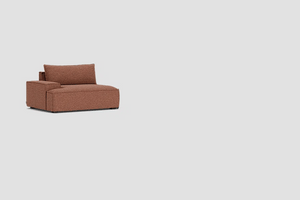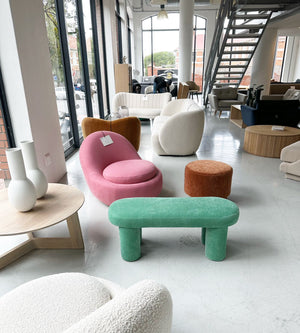
How to Make Chair Covers: Expert Tips for Perfect Fit and Stylish Home Decor
Making chair covers is a practical way to refresh your home decor without spending a fortune. Whether you're looking to protect your furniture from wear and tear or simply want a new look, chair covers offer a versatile solution.
In this guide, we'll explore the step-by-step process of creating your own chair covers. From selecting the right fabric to ensuring a snug fit, we'll cover everything you need to know to get started. Let's dive into the world of DIY chair covers and transform our chairs into stylish, functional pieces.
Materials Needed
Let's jump straight into the essentials needed for making chair covers. Here are the items we'll require:
-
Fabric
Fabric forms the base of your chair cover. Choose durable, washable fabric that suits your decor. Popular options include cotton, linen, and polyester blends. For instance, you might select a heavyweight cotton for a more formal look or a lighter linen for a relaxed feel. -
Measuring Tape
Ensure accurate measurements of your chairs with a good measuring tape. Measure from the top of the chair back to the floor, the width of the chair seat, and the height of the chair legs to get a perfect fit. -
Scissors
Sharp scissors are crucial for cutting fabric cleanly. Dull scissors can ruin your fabric and result in uneven edges. -
Pins and Clips
Pins or clips hold your fabric pieces together as you sew. They’re indispensable for keeping everything in place and ensuring precision. -
Thread
Use strong thread that matches or complements your fabric. Polyester thread often works best for home sewing projects due to its strength and slight elasticity. -
Sewing Machine
A sewing machine speeds up the process and gives you neat stitches. While a basic machine will suffice, a model with different stitch options can provide more versatility. -
Iron and Ironing Board
An iron helps to press seams and creases, giving a professional finish to your chair covers. Iron each piece before sewing for best results. -
Elastic or Velcro
Elastic or Velcro ensures a snug and secure fit for your chair covers. Use elastic for a gathered look around the base and Velcro for easier removal and cleaning.
Creating chair covers is a practical, cost-effective way to refresh our home decor. Let's dive into the processes of getting started.
Preparing Your Chair
Before we even touch fabric, let's ensure the chair is ready for its new cover.
Measuring Your Chair
Accurate measurements are critical. Use a measuring tape to gauge the dimensions of your chair. Measure the height from the floor to the top of the backrest. Then, measure the seat's width and depth. Note these measurements accurately. Don't forget to measure any arms or unique features.
Choosing Fabric
Selecting the right fabric ensures durability and style. Consider fabric options like cotton for ease of washing, or linen for a more rustic look. For a more luxurious option, velvet can add an elegant touch. Ensure the fabric matches the room's decor. Remember the pattern and colour will influence the overall vibe of the space.
Creating chair covers is a practical way to refresh your home decor without spending too much. We’ve already discussed the importance of accurate measurements, fabric selection, and essential materials. Now let’s move on to the crucial step of cutting the fabric.
Cutting The Fabric
Accurate cutting is fundamental to ensuring that the chair covers fit perfectly. Poorly cut fabric can lead to ill-fitting covers and wasted materials. Let's break down this process further:
Creating A Pattern
A pattern acts as a template that guides you during cutting.
- Measure Each Section: Start by measuring each section of your chair, such as the backrest, seat, and arms. For instance, measure the height, width, and depth of the seat. Note down all measurements.
- Draw The Pattern: On pattern paper, draw each section of the chair using precise measurements. Ensure to add extra centimetres for seams and hems. For instance, a 1.5 cm seam allowance is usually sufficient.
- Verify The Fit: Before cutting the fabric, place the pattern on the chair to verify fit. You can adjust the pattern if needed.
- Prepare The Fabric: Lay your chosen fabric on a flat surface. Smooth out wrinkles to prevent uneven cuts.
- Pin The Pattern: Pin the paper pattern firmly onto the fabric. Use enough pins so there’s no shifting while cutting.
- Cut Precisely: With sharp fabric scissors, cut around the pattern. Ensure you follow the drawn lines closely. This step is critical; any discrepancies can affect the fit.
By following these steps for cutting the fabric, we can ensure our chair covers turn out both functional and aesthetically pleasing. Now, let's move to the next phase, sewing the pieces together.
By Jonno Sherwin, Expert in Interior Design with Decades of Experience with Sofas
Sewing The Chair Cover
Ever wondered how to make your living space more inviting and stylish? With our decades of experience in interior design, we're here to share insights on transforming spaces using sofas. Sofas don't just offer comfort; they massively impact the room's aesthetics. Whether you're redesigning a small flat or a spacious mansion, consider these tips and tricks to elevate your home decor.
Project Inspirations and Design Ideas
Small Spaces
Small spaces can still feel luxurious and comfortable with the right sofa. Compact or multi-functional sofas are perfect for these areas.
Utilise Sectional Sofas
A sectional sofa can maximise seating without overwhelming a small room. Opt for a lighter colour to make the space feel larger.
Embrace Sofa Beds
Sofa beds are ideal for small spaces, providing both seating and a sleeping area. They work well in studio apartments or guest rooms.
Play with Patterns and Colours
Incorporate neutral tones with vibrant cushions to add personality without cluttering the room. Patterns can draw the eye and create a focal point.
Large Spaces
Large spaces offer more flexibility but need thoughtful arrangements to avoid feeling empty.
Anchor with a Statement Sofa
A large, statement sofa can anchor a spacious living room. Use a bold colour or unique design to create interest.
Create Zones
Use sofas to divide the space into functional zones. For example, position one sofa for a TV area and another for reading or conversation.
Include Complementary Furniture
Pair large sofas with armchairs, coffee tables, and rugs. This creates a cohesive and inviting atmosphere.
Different Rooms
The sofa you choose can vary by room type, whether it's the living room, bedroom, or even the kitchen.
Cosy Living Rooms
In living rooms, comfort is paramount. Choose plush, deep-seated sofas with enough cushions.
Elegant Bedrooms
For bedrooms, consider a sofa at the foot of the bed. It’s a perfect spot for reading or relaxing.
Functional Kitchens
Even kitchens can benefit from a small sofa, making it a place for casual chats or breakfast. Opt for materials that are easy to clean.
Practical Tips from Jonno Sherwin
Don't Skimp on Quality
Invest in high-quality materials and construction. A good sofa should last years, offering both comfort and durability.
Measure Before You Buy
Always measure your space and consider the scale of the sofa relative to the room. Use painter's tape to outline potential sizes on the floor.
Think About Fabric Choices
Choose fabrics that suit your lifestyle. Families with kids and pets might prefer durable, stain-resistant options.
Mix and Match Styles
Don't be afraid to mix contemporary and traditional styles. An eclectic mix can add character and interest to your decor.
Facts and Examples
- Fact: Quality sofas can last anywhere between 7-15 years depending on usage and material.
- Example: A modern grey sectional can be livened up with colourful throw pillows and a patterned rug, creating a lively and balanced living space.
Final Thoughts
Selecting a sofa involves more than just picking a design you like. Consider the room's needs, space, and your lifestyle. Use our insights to make informed decisions and enjoy the transformation. Got questions or need advice? Don’t hesitate to contact us! We're here to help you make your home beautiful and functional.
Fitting The Cover
Proper fitting enhances both the appearance and functionality of chair covers.
Securing With Straps
We attach straps to ensure the cover stays in place. First, locate the straps on the underside of the cover. Fasten these around the chair legs or under the seat. Straps keep the cover taut, preventing any shifting during use. Reinforce the attachment points if the straps seem loose. Examples of tools include needle and thread or a staple gun to secure them firmly.
Adjusting For A Perfect Fit
Make minor adjustments for a snug fit once the cover is on the chair. Smooth out wrinkles by pulling the fabric tightly over the seat and backrest. Tuck excess material into the chair’s crevices. If there are decorative ties on the back or sides, adjust these to ensure symmetry. Redo the straps if needed, checking under different lighting to catch any folds. A well-fitted cover not only looks professional but extends the chair's life by protecting it from wear and tear.
Conclusion
Creating chair covers is a rewarding project that combines practicality with creativity. By focusing on accurate measurements and thoughtful fabric choices we can transform our chairs into stylish and functional pieces. Expert insights from Jonno Sherwin further inspire us to experiment with different design ideas and spaces. Proper fitting and secure fastening not only enhance the look but also protect our chairs from wear and tear. Let's embrace this opportunity to refresh our interiors with beautifully crafted chair covers that reflect our personal style.
Frequently Asked Questions
How do I measure my chair for a cover?
Accurate measurements are critical for a well-fitting chair cover. Measure the height, width, and depth of the chair, including the seat, backrest, arms, and legs. Use a flexible measuring tape and note down each dimension carefully to ensure a snug fit.
What type of fabric is best for chair covers?
The best fabric for chair covers depends on your needs. Cotton is a popular choice for its comfort and breathability, while polyester offers durability and easy maintenance. Consider factors like usage, care requirements, and the overall decor of the room when selecting fabric.
How can I make sure my chair cover fits properly?
Ensure a good fit by double-checking your measurements before cutting the fabric. Use straps or ties to secure the cover in place and adjust as needed. Proper fitting improves both the appearance and functionality of the chair cover.
Can chair covers protect my furniture?
Yes, chair covers can significantly extend the life of your furniture by protecting it from spills, stains, and everyday wear and tear. They act as a barrier, preserving the chair's original fabric or material underneath.
How do I choose the right colour and style for my sofa?
Consider your existing decor and colour scheme. Neutral tones are versatile and timeless, while bolder colours can make a statement. Jonno Sherwin recommends mixing styles and textures to add depth and interest to your space.


